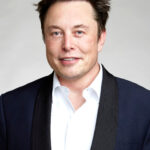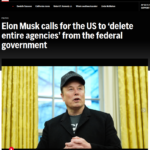Here in California we passed a law requiring a certain percentage of automobile sales from each manufacturer to be zero emissions vehicles, in order for the manufacturer to continue doing business in California. That simple law has been twisted around in many ways until now it is a complicated mess of special cases. One of those special cases will allow for a new class of “extended range electric vehicle” (plug-in hybrid) to exist that, even though it has a gasoline engine on-board, will still be qualified for the highly coveted white HOV sticker. The white HOV sticker is supposed to be reserved for all electric vehicles, making it highly puzzling why the CARB is planning to gift BMW’s i3 (the only qualifying vehicle) with the white HOV stickers.
What’s the deal with the HOV stickers? They allow someone to drive solo in the high occupancy vehicle (HOV) lane. This status is a carrots California dangles in front of car buyers to encourage clean vehicle purchases. The HOV lane has a dual purpose of reducing traffic congestion and reducing air pollution (by reducing traffic congestion). Because the qualifying vehicles for the HOV sticker are some form of clean vehicle, the air pollution goal is still met even though solo drivers in the HOV lane subverts the traffic congestion goal.
Ten years ago the initial HOV sticker with a gold colored HOV sticker jump started the hybrid car market. The gold stickers have long ago sold out and are even expired now, and in their place is a white colored sticker for all electric cars, and a green sticker for the plug-in hybrids. The green PHEV stickers are capped at 40,000 total, while the white BEV stickers are not capped.
We can expect the PHEV stickers to sell out some time in 2013 given the entry of the Chevy Volt, Toyota Prius Plug-in, a couple PHEV’s (Energi) from Ford, and the Honda Accord Plug-in Hybrid.
In Jan. 2012 the California Air Resources Board (CARB) created a new class of vehicle, the BEVx, which is an electric vehicle carrying a sort of range extender engine. The CARB published an extensive report which included the BEVx definition (see ADVANCED CLEAN CARS 2012 PROPOSED AMENDMENTS TO THE CALIFORNIA ZERO EMISSION VEHICLE PROGRAM REGULATIONS![]() ).
).
BMW is set to exploit this new class of vehicle with the BMW i3, set to be introduced for sale in 2013.
A subtext in the CARB report (see link above) is the requirement in California to meet a climate change reduction goal in 2050. The CARB staff has calculated that to meet that goal essentially 100% of California’s light-duty-vehicle fleet must be Zero Emission Vehicles (ZEV’s). The report presents this pretty chart showing what’s required (expected) to change in the light duty vehicle market in order to reach that goal.
 |
| Source – CARB report linked above |
The report describes the newest regulations as putting California on the path to meet these targets, and keeping California as the leading place for adoption of these technologies.
In section 2.1.1 the report claims that some manufacturers have lobbied for a new class of vehicle, the BEVx, or “range extended battery electric vehicles.” While the phrasing is similar to words General Motors uses to describe the Chevy Volt, this class of vehicle is expected to be very different. First, it is expected to have an electric range of about 80 miles (or more), and to have a tiny gasoline engine to provide an ability to limp to a charging station. The gas engine is an “auxiliary power unit” (APU) and would “allow drivers to find a charging location, and discouraging non-zero emission driving.”
This is much longer electric range than existing PHEV’s like the Chevy Volt, and should encourage more all-electric miles than do the existing PHEV’s. Saying that “BEVs are expected to play an important role in ARB’s long-term emissions reduction strategy, but the market for current technology BEVs might be limited,” they suggest the BEVx vehicles would give “BEV customers an extra measure of confidence about range, and if successful, would add substantial zero-emission vehicle miles traveled (VMT) to the overall California fleet.”
This is an interesting idea for an interesting class of vehicle. Is, however, it a ZEV worthy of the white HOV sticker? BEVx’s are gonna have a gasoline engine on-board which makes my ZEV purist self wrinkle up in anger, but I do recognize it’s a pragmatic design choice just like the other PHEV’s.
- the APU range is equal to or less than the all-electric range;
- engine operation cannot occur until the battery charge has been depleted to the charge-sustaining lower limit;
- a minimum 80 miles electric range; and
- super ultra low emission vehicle (SULEV) and zero evaporative emissions compliant and TZEV warranty requirements on the battery system.
- Highway design could decrease death and injury risk, if “we” chose smarter designs - March 28, 2015
- GM really did trademark “range anxiety”, only later to abandon that mark - March 25, 2015
- US Government releases new regulations on hydraulic fracturing, that some call “toothless” - March 20, 2015
- Tesla Motors magic pill to solve range anxiety doesn’t quite instill range confidence - March 19, 2015
- Update on Galena IL oil train – 21 cars involved, which were the supposedly safer CP1232 design - March 7, 2015
- Another oil bomb train – why are they shipping crude oil by train? – Symptoms of fossil fuel addiction - March 6, 2015
- Chevron relinquishes fracking in Romania, as part of broader pull-out from Eastern European fracking operations - February 22, 2015
- Answer anti- electric car articles with truth and pride – truth outshines all distortions - February 19, 2015
- Apple taking big risk on developing a car? Please, Apple, don’t go there! - February 16, 2015
- Toyota, Nissan, Honda working on Japanese fuel cell infrastructure for Japanese government - February 12, 2015











